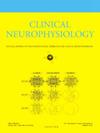Electroencephalogram in children with hepatic encephalopathy: towards a new classification?
IF 3.6
3区 医学
Q1 CLINICAL NEUROLOGY
引用次数: 0
Abstract
Objective
Diagnosis of hepatic encephalopathy (HE) is challenging in children. The electroencephalogram (EEG) is an easily accessible and pivotal tool but no satisfactory classification is currently available.
Methods
We studied inter-observer agreement with Gwet’s AC2 coefficient with quadratic weights, for Navelet et al.’s (1990) classification (1990) in EEGs successively performed for chronic or acute liver disease in a reference centre. We analysed reasons for discordance and proposed a new classification. We studied the association between both classification, the neurological impairment and hepatic biological dysfunction.
Results
171 EEGs were analysed. Slowing of the dominant rhythm and loss of reactivity characterized the pathological awake EEGs. Using the Navelet classification, there was a very high inter-rater agreement beyond chance. We have refined it with Children’s Hepatic Encephalopathy EEG Recording Scale (CHEERS). Inter-rater agreement for the CHEERS classification in 27 supplementary EEGs was almost perfect beyond chance. Association between each EEG scale and the neurological impairment and hepatic biological dysfunction was significant.
Conclusion
Our proposed classification is reliable in detailing abnormalities when suspecting HE in children.
Significance
The next step will be to validate the classification in an external cohort by independent readers and to prove its utility in detecting the first stages of deterioration of hepatic function.
肝性脑病患儿脑电图:迈向新的分类?
目的肝性脑病(HE)在儿童中的诊断具有挑战性。脑电图(EEG)是一种容易获得和关键的工具,但目前没有令人满意的分类。方法:我们研究了与Gwet的二次权AC2系数的观察者间一致性,用于Navelet等人(1990)在参考中心对慢性或急性肝病的脑电图进行分类(1990)。我们分析了不一致的原因,并提出了新的分类方法。我们研究了两种分类、神经损伤和肝脏生物学功能障碍之间的关系。结果分析了171例脑电图。病理性清醒脑电图表现为显性节律减慢和反应性丧失。使用Navelet分类,评分者之间的一致性非常高。我们用儿童肝性脑病脑电图记录量表(CHEERS)对其进行了改进。在27个补充脑电图中,评价者对CHEERS分类的一致性几乎是完美的。各EEG量表与神经功能损害和肝脏生物学功能障碍有显著相关性。结论当怀疑儿童HE时,我们提出的分类在详细描述异常方面是可靠的。下一步将是通过独立读者在外部队列中验证该分类,并证明其在检测肝功能恶化的第一阶段的实用性。
本文章由计算机程序翻译,如有差异,请以英文原文为准。
求助全文
约1分钟内获得全文
求助全文
来源期刊

Clinical Neurophysiology
医学-临床神经学
CiteScore
8.70
自引率
6.40%
发文量
932
审稿时长
59 days
期刊介绍:
As of January 1999, The journal Electroencephalography and Clinical Neurophysiology, and its two sections Electromyography and Motor Control and Evoked Potentials have amalgamated to become this journal - Clinical Neurophysiology.
Clinical Neurophysiology is the official journal of the International Federation of Clinical Neurophysiology, the Brazilian Society of Clinical Neurophysiology, the Czech Society of Clinical Neurophysiology, the Italian Clinical Neurophysiology Society and the International Society of Intraoperative Neurophysiology.The journal is dedicated to fostering research and disseminating information on all aspects of both normal and abnormal functioning of the nervous system. The key aim of the publication is to disseminate scholarly reports on the pathophysiology underlying diseases of the central and peripheral nervous system of human patients. Clinical trials that use neurophysiological measures to document change are encouraged, as are manuscripts reporting data on integrated neuroimaging of central nervous function including, but not limited to, functional MRI, MEG, EEG, PET and other neuroimaging modalities.
 求助内容:
求助内容: 应助结果提醒方式:
应助结果提醒方式:


